Sciatica Exercise, Sciatica Treatment Center in Andersonville, Chicago
Sciatica
What Is Sciatica?
Did you know that sciatica is not an injury or disease? That may surprise you if you have been told by a healthcare specialist that you have sciatica after complaining of pain. Instead, sciatica is a symptom described as neuropathic (nerve pathology) or radicular (radiating) pain felt due to irritation of the “sciatic nerve.” or component of it.
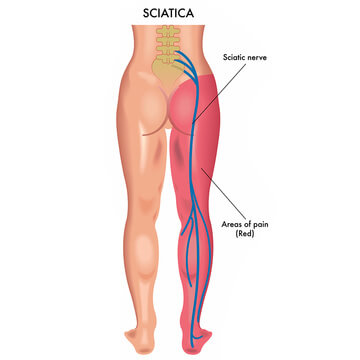 Although the sciatic nerve officially originates at the pelvis and travels downward, there are five spinal cord segments (L4 through S3) that feed into the beginnings of the sciatic nerve. Your sciatic nerve is an impressively massive nerve bundle that runs either over, through, or under your piriformis muscle, depending on your individual anatomic variation, and ends about an inch above the knee where it branches off.
Although the sciatic nerve officially originates at the pelvis and travels downward, there are five spinal cord segments (L4 through S3) that feed into the beginnings of the sciatic nerve. Your sciatic nerve is an impressively massive nerve bundle that runs either over, through, or under your piriformis muscle, depending on your individual anatomic variation, and ends about an inch above the knee where it branches off.
The spinal cord nerve roots that originated from the L4, L5, S1 and S2 go on to form the common peroneal nerve right above your knee and travel down the side of your leg to your foot. The spinal cord roots that originated from the L4, L5, S1, S2 and S3 go on to form the tibial nerve right above your knee and also continue down the back of your leg to your foot.
Why bother getting into all of this medical and anatomical stuff?
To make a point: sciatica pain is a symptom caused by many different conditions, ranging in severity, from inflammation to tumors that can occur anywhere from L4 down the sciatic nerve. While we have seen and treated many causes of sciatic pain, most often the sciatic pain we see at Ravenswood Chiropractic & Wellness Center results from a herniated disc, bulging disc, or a slipped disc in the L4/L5 region. A pinched sciatic nerve can cause leg pain, numbness, and pain as far down as your feet. Where you feel the pain depends on where the problem is. But sciatica pain relief is possible with the right combination of treatments for your particular cause of sciatic pain. A proper diagnosis is critical to achieving a fast recovery. We will outline below how we diagnose and treat sciatica in our office.
Sciatica Symptoms
Because 10-15% of sciatica patients experience a recurrence of sciatic pain, it is important to uncover and treat the underlying cause and ensure proper muscle coordination and strengthen core muscles and surrounding muscles and maintain flexibility and joint mobility with regular activity and chiropractic maintenance evaluations and treatments as needed.
What Does Sciatica Feel Like?
In general, medical professionals define sciatica as numbness, weakness, burning, tingling or even a sharp pain on one side of the body, in the area of the lower back, buttocks, hip, leg, or foot. Pain may radiate down the leg just a little bit or the entire way down to the foot. Pain is usually worse when bending over or rotating the trunk.
Radicular or radiating pain is one of the more frequent and intense symptoms associated with sciatica that we see in our office. You may also feel numbness and tingling or a pins-and-needles feeling that may occur in your lower back and travel all the way down your leg. You may feel this sensation in any area of your lower body, just as you may feel shooting pain travel down your leg that originates in your lower back. Depending on the amount of cord level compression you may experience weakness or what is called foot drop (when you can’t dorsiflex or lift your foot up properly) – this occurs with a disc injury.
All of these symptoms can range from very mild to severe and debilitating. The symptoms may occur gradually or suddenly and may be constant, or they may be transient. Pain occurrence may also depend on your activity or inactivity. If a disc herniation is the cause of your sciatica symptoms, you may notice exacerbated shooting pain when you cough or sneeze. Once sciatica symptoms are noticeable, the nerve circulation has been affected to the point where motor axons are misfiring upon their death and causing pain signals (nociceptive signals) to go haywire. If the axons are dying, then the affected muscles will also experience pain, twitching, and atrophy.
Causes of Sciatica
Sciatic nerve pain develops when the sciatic nerve roots (L4-S3) are themselves compressed, or if the spine is pinching nerve roots leading to the sciatic nerve. When nerve roots are pinched, the pain signals travel along the nerve, causing the radiating pain that is so often associated with sciatica. Inflammation is usually also playing a role in compression.
Compression itself does not always cause sciatic pain unless it is of particular force and duration to cause sufficient blockage in the nerve signals and fluid (blood, lymph, and cerebrospinal fluid) and oxygen going back and forth.
Because the sciatic nerve and its branches are the longest and widest continuous axons in the body—running from the lower back down to your toes—there are many places where the nerve signals causing pain can end up. This can be a muscle spasm or pain in the spinal discs and sometimes in the spine. Commonly this pain is due to muscle spasms or a disc injury. However, it can also be a sign of serious illness. It is important to go to a qualified spine specialist for a diagnosis.
Chiropractors are experts in treating these biomechanical issues, which usually trigger inflammation that further contributes to compression and pain.
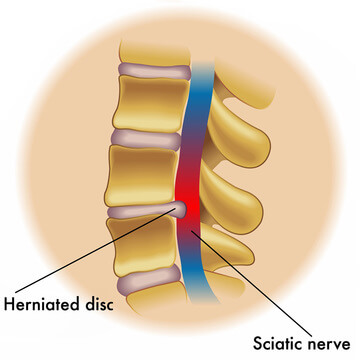
Herniated disc occurs when the inner portion of your disc is injured and buldges into the spinal column. This bulging disc then pushes on the sciatic nerve, causing pain. In some severe cases causing spinal stenosis and a whole separate set of symptoms and considerations discussed in our spinal stenosis article. Muscle spasms are another common cause of sciatica we see in our office. Most often the spasms are in the piriformis muscle (as in piriformis syndrome), but they can be in other muscles in the lower back and pelvic region.
A common cause of sciatica is sitting for long periods. Sitting compresses muscles in the buttocks and shortens the hamstrings, both of which can lead to compression of the sciatic nerve
Although uncommon, serious causes of sciatica include spinal tumors, which require immediate medical attention.
Sciatica Pain is caused by irritation of the sciatic nerve roots (L4 through S3). This irritation could be due to
- Spinal Stenosis including (Lumbar spinal stenosis and Lumbar lateral canal stenosis)
- Degenerative disc disease
- Piriformis syndrome
- Isthmic spondylolisthesis
- Sacroiliac joint dysfunction or sacroiliitis
- Infection
- Pregnancy-related
- Arthritis of the low back, SI joint, or hip
- Space occupying lesion (tumor)
- Trigger points or muscle spasms along the glutes, hip, spine, or thigh
If you happened to skim over this article, let us reiterate it here: we cannot stress enough how essential an accurate diagnosis from an experienced spine expert is for sciatica recovery and discovery of any serious underlying conditions.
The good news is that with a proper diagnosis and treatment, most of our sciatica patients get better with conservative care (without drugs, injections, surgery) in few weeks or months (for severe, complex, stubborn cases), although in rare instances we may refer you to a surgeon to correct the underlying cause.
Sciatica Treatment & Pain Relief Options
Because treatment for sciatica isn’t a one-size-fits-all scenario, each case requires a unique treatment plan. The first step is a thorough examination by a qualified healthcare professional, such as your chiropractic physician.
There are different approaches used to treat sciatica depending on which type of health care specialist you go to for diagnosis and treatment. The 2017 Guidelines for Low Back Pain from the American College of physicians are conservative care options 1st such as Chiropractic (including Radial Shockwave Therapy and Class IV Laser), Acupuncture, and Massage. Some doctors will still prescribe pain medications, injections, or muscle relaxants or refer you to a surgeon.
The most important component of a successful sciatica treatment plan is proper diagnosis and treatment plan for the cause of sciatica along with a simultaneous comprehensive pain relief program.
At Ravenswood Chiropractic & Wellness Center, our chiropractic physician will diagnose the cause of your sciatica by providing a thorough physical examination of the lumbar spine, hip, and knees, including muscles, joints, posture, and gait, as well as discuss past injuries and lifestyle habits that may be contributing to your condition. Biomechanical, neuromuscular, range of motion and functional tests are conducted to determine the cause. Other tests such as MRI, EMG, X-rays, blood tests or nerve conduction velocity testing may be performed. At Ravenswood Chiropractic and Wellness Center, we have specialty training in complex joint and soft tissue problems that cause sciatica so our patients can have confidence that their chiropractor is providing thorough care for sciatic pain relief.
Do not ignore sciatica symptoms. Although relatively uncommon, prolonged compression of the cord levels feeding into the sciatic nerve and the sciatic nerve itself can lead to permanent nerve damage. See a qualified healthcare provider for a proper diagnosis. In our office, we provide immediate exams for sciatica pain. Just let us know that you are in pain, and we will accommodate you with an immediate, same-day exam. It is also important to be aware that sciatica symptoms differ from progressive leg weakness and any loss of or changes in bladder or bowel function. If either of these particular symptoms arises, this is an emergency. Call 911 and seek care from your nearest hospital emergency room.
What to Do for Sciatica Pain
Relief from sciatica is possible with the right treatment plan for you. Once the cause of your sciatica pain is identified, your chiropractic physician can determine a customized treatment plan for you.
Sciatica treatments focus on relieving the compression, inflammation, and irritation surrounding the nerve segment that is causing the pain. These treatments may include Chiropractic Care (including Radial Shockwave Therapy and Class IV Laser), Acupuncture, Physical Therapy, and Massage either as stand-alone treatments or in combination as per your treatment plan which will determine which treatments may work best for your situation.
Chiropractic Sciatica Relief
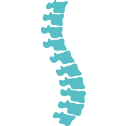 Choosing a chiropractor for sciatica pain relief is a something that many people have found beneficial. Because chiropractors specialize in spine care by definition, they are a logical choice to determine the correct reason for the sciatica pain and therefore typically have a “long-term outcome advantage” over standard medical attention when treating their patients. Most often in our office, we see sciatica pain caused by a disc bulge in the spine. The disc bulge can cause inflammation, or the disc itself could compress the sciatic nerve. The compression of the nerve is what sends the pain signals down the nerve. Manual spinal manipulation, as well as McKenzie Method and Flexion & Distraction of the affected area by a chiropractor, can help restore the mobility of the spine, which will reduce compression on the sciatic nerve.
Choosing a chiropractor for sciatica pain relief is a something that many people have found beneficial. Because chiropractors specialize in spine care by definition, they are a logical choice to determine the correct reason for the sciatica pain and therefore typically have a “long-term outcome advantage” over standard medical attention when treating their patients. Most often in our office, we see sciatica pain caused by a disc bulge in the spine. The disc bulge can cause inflammation, or the disc itself could compress the sciatic nerve. The compression of the nerve is what sends the pain signals down the nerve. Manual spinal manipulation, as well as McKenzie Method and Flexion & Distraction of the affected area by a chiropractor, can help restore the mobility of the spine, which will reduce compression on the sciatic nerve.
A study published in the Journal of Manipulative and Physiological Therapeutics found that chiropractic care has a “long-term outcome advantage” over standard medical attention for patients with some types of sciatica. The study noted that “The chiropractic encounter may have enhanced patients’ self-efficacy motivation, leading to better coping abilities and better pain and disability outcomes.” (J Manipulative Phys. Ther. 2001;24:543-51)
Our chiropractor has over 20 years of expert clinical experience in diversified technique allowing them to select the best adjustment for your condition and that your body responds best to including gently directed adjustments to resolve mobility and flexion distraction to relieve pressure on your sciatic nerve, thereby reducing or eliminating pain.
Advanced Technology Treatments for Sciatica
For those suffering from sciatica, Radial Shockwave Therapy and Class IV Laser Therapy are two advanced treatment options we provide at Ravenswood Chiropractic in Chicago that have shown promise in reducing pain and promoting healing.
Radial Shockwave Therapy involves directing mechanical shockwaves at injured tissue, which can lead to pain relief by stimulating pain mediator Substance P, which has an analgesic effect for chronic or long-term sciatic nerve irritation. However, most importantly, it reduces inflammation in the area (through mast cell degranulation). It promotes the regeneration of nerves and the strengthening of muscles and tendons by stimulating fibroblasts and procollagen synthesis to begin healing at the cellular level.
Similarly, Class IV Laser Therapy uses biostimulation to promote nerve regeneration and alleviate pain. Both treatments are effective in treating sciatica and other nerve-related issues.
Acupuncture Sciatica Options
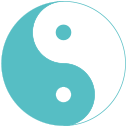
Many of our patients at Ravenswood Chiropractic & Wellness Center elect to receive acupuncture for sciatica. Acupuncture can be used alone or in conjunction with chiropractic therapy to reduce pain and inflammation, thereby relieving compression on the nerve. Acupuncture treatment for sciatic nerve pain will help the body remain relaxed and allow it to begin healing itself.
How Does Our Acupuncturist Treat Sciatica?
Acupuncture is a part of Chinese medicine that takes a holistic approach to the body. Chinese medicine does not separate the body into systems like Western medicine. However, just like in Western medicine, a proper diagnosis is essential to the development of an effective acupuncture treatment plan. The acupuncturist will look at your tongue and take your pulse to identify specific imbalances that could be causing or contributing to your sciatica. Our acupuncturists’ treatment plan is based on treating the deficiencies or excesses, thereby bringing your entire body into balance. Many of our patients undergoing acupuncture for sciatica reveal to us that other health issues they have often been experiencing resolve once the body has been brought into balance. What a nice side effect!
Often, our acupuncturist will discover that there is Qi (pronounced “Chee”) and blood stagnation in the meridians on your back. Stagnation of blood and qi often affects muscles of your low back causing muscle spasms triggering shooting pain that is so common to our sciatica patients. By delving deeper to discover what has caused that stagnation once those channels are unblocked, our acupuncturist can help you get maximum relief and prevent sciatica from recurring.
How Our Acupuncturist Balances Your Qi to Resolve Sciatica
Our licensed Chicago acupuncturist may use one or more treatment approaches available to her within the scope of Chinese medicine. They may depend on what is causing your sciatica in addition to your blocked back channels, such as liver qi vacuity, spleen vacuity, etc. Our acupuncturist may choose acupuncture, electro-acupuncture, Tui Na or cupping. Because your lower back is so very interconnected to your glutes, hip, and pelvis, the treatment will focus on the entire region. You can expect the muscles in the tendons and ligaments in the area to relax and eventually, strengthen from the treatments. This muscle relaxation is due to the release of the spasms in the muscles allowing them to strengthen and heal naturally.
During this time, you may find massage particularly beneficial to help further relax the muscles in the region. Also, chiropractic adjustments will become the most effective at this point of treatment, as the muscles will no longer spasm and lock down the joints.
At Ravenswood Chiropractic and Wellness Center, we specialize in the conditions that cause sciatic nerve pain so you can feel confident you are receiving the highest standard of care. Just as all the parts of the mid-back are interconnected to each other, the therapies we offer and recommend are interconnected and used specifically to achieve specific goals during specific times of your healing and recovery to accomplish different things.
Physical Therapy for Sciatica
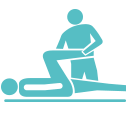 Here at Ravenswood Chiropractic & Wellness Center, we also offer sciatica physical therapy as either part of a comprehensive chiropractic care program or as a standalone treatment to correct the conditions that led to your sciatic pain. Exercises to help improve coordination, as well as strengthen and stretch muscles will promote relaxation to relieve pressure on the sciatic nerve.
Here at Ravenswood Chiropractic & Wellness Center, we also offer sciatica physical therapy as either part of a comprehensive chiropractic care program or as a standalone treatment to correct the conditions that led to your sciatic pain. Exercises to help improve coordination, as well as strengthen and stretch muscles will promote relaxation to relieve pressure on the sciatic nerve.
Simply watching YouTube videos on sciatica exercises and doing them on your own without a proper diagnosis and trained professional observation can lead to more pain and discomfort, even further injury. Even doing a good exercise correctly, but at the wrong time during your recovery, may result in further damage. At Ravenswood Chiropractic and Wellness Center, you will have one-on-one time learning specific exercises and stretches prescribed for your exact condition causing your sciatic pain.
Although you may feel that the pain of your sciatica is too intense to move around, resting will make your pain worse in most cases. We will provide guidance to be gentle and get results.
In general, it is of strategic importance to strengthen your core muscles to help support your spine in proper alignment. Strengthening your core muscles helps you make twisting, rotating and flexion and extension of the spine with a full range of motion comfortably. Our chiropractic physician will evaluate the strength of your core muscles and prescribe our physical therapy team to provide you with exercises and stretches accordingly to your state of health.
Stability exercises may also be prescribed during this time to enhance further your results and prevent recurrence depending on the cause of your sciatica and at which stage of recovery you are in. More specifically, there are specific stretches and exercises designed to provide pain relief from sciatica depending on your cause of sciatica or to strengthen and further mitigate recurrence. There are very specific exercises for herniated disc, spinal stenosis, degenerative disc disease, piriformis syndrome, or spondylolistheses, as well as sacroiliac (SI) joint exercises for sciatic pain.
Depending on the cause of your sciatica and your stage of recovery, our physical therapy team and chiropractor may also use hot and cryotherapy treatments. When appropriate, heat will dilate your blood vessels, increasing blood flow to the injured areas which brings with it increased oxygen and reduced muscle spasms. Cryotherapy therapy does the opposite and slows circulation. However, it will also stop muscles spasms by reducing inflammation and reducing pain sensation to the area causing your muscle guarding.
With the help of ultrasound technology, we stimulate circulation at deep targeted levels of your muscle and soft tissue which will reduce inflammation also will provide pain relief and reduce spasms.
By sending low-frequency electrical currents through muscles, nerves, and connective tissue, electrotherapy stimulation sends signals to the body to release natural painkillers (endorphins) to help your sciatica pain. Electrotherapy also contributes to the reduction of muscle spasms, increasing local blood circulation, and maintaining or increasing your range of motion.
All of these things will help your sciatica pain while encouraging movement to prevent recurrence of pain.
Part of your physical therapy program may include instruction on modification of daily living activities such as sitting (or not sitting so much as in the case of sciatica) and other ergonomic considerations.
Sciatica Massage Treatment
 Sciatica Massage is yet another option for sciatica relief. Massage therapy not only helps relax your muscles, but it promotes circulation as well. Your massage therapist will focus on muscles in the lower back, upper legs, hamstrings, and other areas that help support the area of the back near the sciatic nerve.
Sciatica Massage is yet another option for sciatica relief. Massage therapy not only helps relax your muscles, but it promotes circulation as well. Your massage therapist will focus on muscles in the lower back, upper legs, hamstrings, and other areas that help support the area of the back near the sciatic nerve.
At Ravenswood Chiropractic and Wellness Center, our massage therapists are also included in your expert sciatica care team. Their clinical experience in our office has yielded tremendous results with even our most chronic and stubborn cases of sciatica.
Well versed in multiple techniques, your therapist will choose methods that are most compatible with your comfort level while getting you the most benefit for your condition.
Deep tissue massage and myofascial release are just two of the techniques that your therapist may use. Because our massage therapists are clinical or therapeutic massage therapists, they are highly specialized in providing massage utilizing techniques that will address all of the muscles affected by your sciatic nerve according to your condition and as directed by the chiropractic physician as well as your comfort level (as always, feedback is helpful).
The muscles your massage therapist is most likely to include the piriformis, quadratus lumbrum, psoas, quadriceps femoris, glutes, and hamstrings.
What Can I Do at Home Right Now to Start Feeling Better?
Limiting sitting time is beneficial for some of the causes that contribute to sciatica symptoms. So one thing you can do for sciatic nerve pain is to reduce the amount of time spent sitting.
Why? Because sitting is a relatively unnatural position for our body and our spine, in particular, to be in. It increases the stress put on the lower back, especially if you do not practice optimal posture. Prolonged sitting means prolonged pressure on the intervertebral discs as well which may or may not be protruding and causing your sciatica pain. Numerous studies have demonstrated that the disc volume or height (how much cushion your disc contains) is adversely affected by the length of time sitting. All this stress on your lower back has also been shown to begin to affect your nerves, including those that ultimately form your sciatic nerve.
Get Relief Today
Chicago sciatica sufferers: you don’t need to spend another day waiting for relief from pain! Call Ravenswood Chiropractic & Wellness Center today by calling or texting us at 773.878.7330 to schedule an examination for your sciatica symptoms. You can also schedule your exam on-line.
We are Experts at Providing Sciatica Pain Relief: Call us Today
Although most people recover from sciatica, it does have the potential to be the symptom of something serious. In rare instances, if not treated appropriately sciatica can lead to permanent loss or function in the legs or pelvis.
Call or Text Ravenswood Chiropractic & Wellness Center today at 773.878.7330 to schedule an examination for your sciatica symptoms. We are located in Chicago (in Andersonville) with easy street parking available. Be sure to let us know you are in pain when you call so that we can schedule you for an immediate exam.










